Doctors Blog
 Certain foods are crucial to help recover from an injury. When we have damaged tissue, like a torn muscle or tendon, our body needs specific nutrients to heal stronger, and faster.
Certain foods are crucial to help recover from an injury. When we have damaged tissue, like a torn muscle or tendon, our body needs specific nutrients to heal stronger, and faster.
Healthy diet > Supplements
Vitamins and minerals from a food source are SUPERIOR to taking a supplement. Healthy food offers hundreds of antioxidants, carotenoids, flavonoids, and minerals not found in supplements! Additionally, when we eat a health diet, our body automatically maximizes absorption of "the good stuff", and eliminates what we don't need. Taking supplements can result in extremely high, or toxic, levels of vitamins, which can be harmful.
Assess your diet FIRST before taking supplements to ensure your body is getting what it needs to heal.
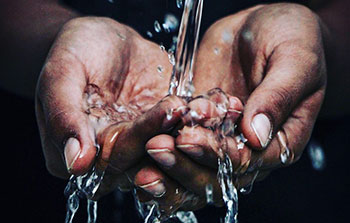 ~50% of our body composition is water~
~50% of our body composition is water~
We've all heard the cardinal rule for daily water consumption... "Adults need 6 to 8- 8oz glasses of water". But this isn't personalized for you or your activity level. YOUR WEIGHT determines your body's need. Other factors to consider are activity level, outside temperature, pregnancy, diet, and medications/health conditions.
Here's a more personalized way to estimate how much water YOU should be drinking:
- Take your weight (in lb) and multiply by 0.5. That number is the minimum ounces you should be drinking per day.
- For every 30 minutes you exercise, add 12 oz.
Example: 150lb x 0.5= 75oz
Exercise for an hour= (60min/30min) x 12oz= 24oz
Recommended: 99oz of water
Signs of dehydration include: dry mouth, headache, muscle cramps, dark or strong smelling urine.
Talk to a medical professional if you have questions about your hydration level.
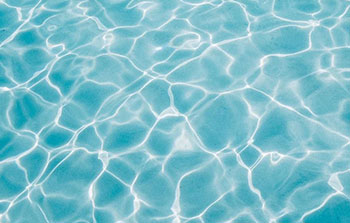 Are YOU working through an injury or rehabbing after surgery? Need a rest day as a competitive athlete?
Are YOU working through an injury or rehabbing after surgery? Need a rest day as a competitive athlete?
Aquatic/Water therapy provides numerous benefits:
- Increases circulation and decreases swelling. In water, hydrostatic pressure and increased mobility combine to help improve blood flow and decrease swelling.
- Reduces pain and muscle spasms. Hydrostatic pressure of water provides compression during water therapy. With muscles stimulated underwater, the body relaxes and exercises are more comfortable to perform.
- Less stress on affected bones, muscles and tendons. Buoyancy of water makes patients up to 80% lighter! Without the stress of gravity, the body is more relaxed and exercises can be performed more easily.
Aquatic therapy is a MUST for athletes and HIGHLY RECOMMENDED for patients recovering from injuries or rehabilitating after surgery.
Find out if it's safe for you to incorporate aquatic therapy into your routine.
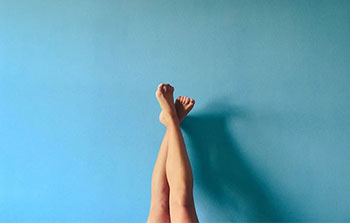 Believe it or not, there is ZERO hard scientific evidence backing scar management with creams, ointments, patches, lasers, retinol, steroids, and more. It's a 22.5 billion dollar industry (2022) for good reason...Most people want to avoid unsightly scars!
Believe it or not, there is ZERO hard scientific evidence backing scar management with creams, ointments, patches, lasers, retinol, steroids, and more. It's a 22.5 billion dollar industry (2022) for good reason...Most people want to avoid unsightly scars!
Your body's ability to heal an incision is largely determined by:
- Your genes
- Surgeon technique
So what to do?
- Pick a surgeon you trust, and who cares about what your scar looks like. Ask them about their technique!
- Follow your surgeon's post-operative instructions. Ask questions!
- MY RECOMMENDATIONS at 3 weeks post-op (EVIDENCE-BASED, BACKED BY SCIENCE):
- Initiate pressure therapy with a compression sleeve, sock, or bandage. Pressure helps regulate collagen synthesis, and is believed to decrease fibroblast activity, decreasing scar height.
- Apply petrolatum (41%) morning, noon, and night to your incision for 8 weeks. This ointment keeps the wound from drying out, speeding up healing.
- Start scar mobilization techniques with help of physical therapy at 4 weeks. Mechanical stimuli on a scar initiates mechanotransduction- cells sense a stimulus and convert it into biochemical signals, effectively influencing the cross-linking of collagen fibers. It helps increase the pliability of the skin, helping it to move and appear like "normal".
The BEST thing you can do to maximize your body's ability to heal is to eat a healthy, well-balanced diet and drink plenty of water. It will keep your cells happy and functioning properly.
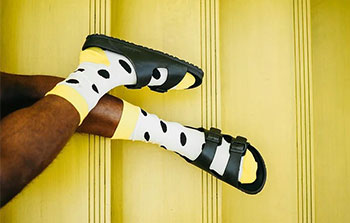 Compression garments (CGs), such as socks, sleeves, shorts, etc., have been investigated for years to elucidate health benefits.
Compression garments (CGs), such as socks, sleeves, shorts, etc., have been investigated for years to elucidate health benefits.
What YOU should know:
- CGs reduce the severity of delayed-onset muscle soreness and exercise-induced muscle damage by increasing venous blood flow velocity and lymphatic outflow.
- CG users are reported to have lower levels of creatine kinase, a marker of muscle damage, and lactate than non-CG users.
Use of compression during and after exercise can:
- IMPROVE pain scores
- DECREASE perceived soreness
- REDUCE overload/overuse injuries
For patients recovering from surgery, CGs promote circulation, reduce swelling, and decrease risk of blood clots (DVT).
We can ALL benefit from compression garments. Talk to a healthcare professional today about how COMPRESSION can help you!
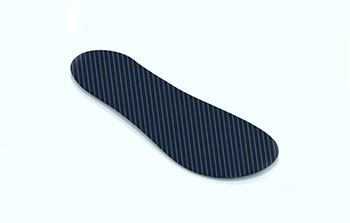 Your toes BEND during sports, exercise, or performing daily activities helping maximize your propulsion or push off strength. How far your toes bend can be determined by what you have on your feet (or in your shoes)!
Your toes BEND during sports, exercise, or performing daily activities helping maximize your propulsion or push off strength. How far your toes bend can be determined by what you have on your feet (or in your shoes)!
Shoe bending stiffness, or longitudinal bending stiffness= how easily a shoe can bend.
Think of a minimalist shoe. Lightweight, little to no cushion or stability, and super flexible.
Next, think of a traditional running shoe. Slightly heavier, more cushion and stability, less flexibility. ~GREATER BENDING STIFFNESS~
It’s reported that increasing the longitudinal bending stiffness of a shoe DECREASES energy expenditure until a low point is reached. This suggests that there is an OPTIMAL SHOE STIFFNESS, which is also based on YOUR ANATOMY, SPORT, ACTIVITY LEVEL, and COMFORT.
A rigid carbon fiber footplate that runs the length of your shoe reduces the bending moment at the toe joints, which is believed to reduce energy expenditure (in certain conditions). Additionally, a carbon fiber insert lengthens the foot as a lever arm, which increases the power of the entire lever. #biomechanics
Remember: Every athlete is different! What works for one athlete, may not work for you. There is no “one size fits all” solution when it comes to shoe gear OR performance equipment. This is a growing area of research, so stay tuned!
 Did you know that GLOBALLY 50% of the population receives insufficient Vitamin D?!?!
Did you know that GLOBALLY 50% of the population receives insufficient Vitamin D?!?!
Studies show 80% of our Vitamin D comes from UV-B rays from SUNLIGHT (!) and 20% from our diet.
Vitamin D is ESSENTIAL for the absorption of Calcium... and maximizing bone health! What can YOU do to maximize your Vitamin D intake and keep your bones strong and healthy?
1. Get regular physical exercise indoors and outdoors.
2. Get 10-15 minutes of exposure to sunlight each day.
3. Eat a healthy, well-balanced diet that includes foods rich in Vitamin D (fatty fish, mushrooms, egg yolks, and fortified foods such as cereals, orange juice, low-fat dairy, and plant-based milk alternatives)
4. Take a supplement if you aren't getting adequate intake (talk to a medical professional for recommended dosing).
Patients often ask HOW MUCH Vitamin D they should be getting. A healthy level of Vitamin D for both children and adults is between 40-60ng/mL. If you have a bone injury, like a stress fracture, or recently underwent surgery, your preferred level may be closer to 60ng/mL. Most physicians would agree that levels under 30ng/mL are "insufficient." Fatigue, difficulty sleeping, depression, hair loss, and muscle weakness/cramps are just a few symptoms of Vitamin D deficiency.
***Ask a medical professional for help determining if you should be tested for a deficiency or require supplementation.***
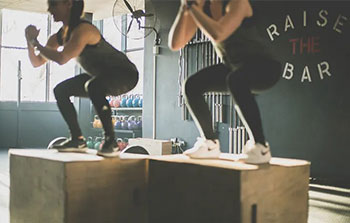 Stress fractures are overuse injuries, related to intense training, sudden increase in activity level, and repetitive movement patterns. Other related factors can be wearing worn out shoes or the wrong shoe type, poor technique, insufficient rest, and changes to the surface you're performing on. The prevalence of stress fractures is on the rise, especially in young athletes and adults beginning new workout routines after periods of inactivity.
Stress fractures are overuse injuries, related to intense training, sudden increase in activity level, and repetitive movement patterns. Other related factors can be wearing worn out shoes or the wrong shoe type, poor technique, insufficient rest, and changes to the surface you're performing on. The prevalence of stress fractures is on the rise, especially in young athletes and adults beginning new workout routines after periods of inactivity.
What is a stress fracture? It's a weakened area in the bone due to microscopic tears. Without proper treatment, the tears can progress into a complete fracture.
Common symptoms:
- Pain with activity that subsides with rest
- Swelling in the area of injury
- Tenderness with pressure on the bone
It's important to seek treatment from a medical professional if you suspect a stress fracture. Prompt diagnosis, treatment, and rehabilitation can help keep you moving and prevent further injury.
